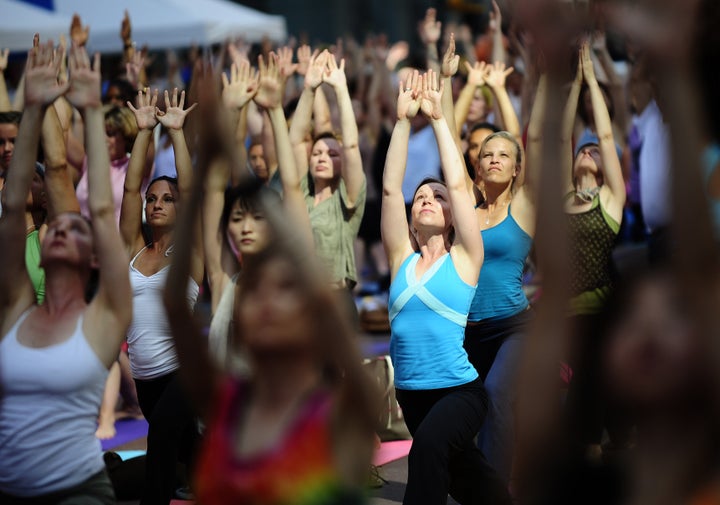
In launching a campaign to "Take Back Yoga" from New Age gurus and fitness entrepreneurs, the Hindu American Foundation has generated a storm of controversy -- one that recently spilled from the blogosphere onto the front page of The New York Times. Nobody owns yoga, the targeted practitioners have replied almost in unison; how inflexible to portray the American fondness for yoga as cultural thievery. Let the new adepts keep their peace of mind, while turning their bodies into pretzels, so the defense goes.
A little more than a century ago when yoga was first introduced to the United States through visiting swamis and a small handful of upstart American teachers, few were rushing to claim it, let alone copyright or market it. Advocating yoga could land you in jail rather than in splashy magazines or swanky studios. There was a lot more grief in it than money or tranquility.
No one made that clearer than the American misfit Ida C. Craddock who set herself up in Chicago in 1899 as "pastor" of the Church of Yoga, only to die by her own hand three years later in Manhattan after being found guilty once again in federal court of blasphemous obscenity. "PRIESTESS OF YOGA A SUICIDE--Miss Ida Craddock, the Leader of a Peculiar Religious Sect, Kills Herself Rather Than Go to Prison," shouted one New York newspaper's headline.
Embracing yoga was costly for Craddock -- and not because of a gym membership. The greatest vice fighter of the day, Anthony Comstock, saw her as a terrible menace, depicting her as both disgracefully sacrilegious and "indescribably nasty." Craddock seemed hell-bent on corrupting American innocents with teachings that brazenly combined spiritual guidance about yoga with marital advice about sexual relations. Comstock only scoffed at the notion that she was the leader of "the Holy Church of Yoga." He was sure instead that she was primarily a "lecturer of filth."
Comstock's New York Society for the Suppression of Vice, a faith-based voluntary society with strong government backing, made her life miserable. In his obsessive worrying over obscenity Comstock could sound like a sanctimonious prude, but his power was very real: Imagine Jerry Falwell or Pat Robertson with a badge. He and his allies spearheaded Craddock's arrest in Philadelphia, Chicago, Washington, D.C. and New York, and her writings were repeatedly banned as obscene literature. In Chicago, the famed lawyer Clarence Darrow kept her out of prison with a plea bargain. The condition: Craddock had to hand over all of her pamphlets to be burned. When Comstock put a book-burning reformer and a prison guard on the seal of his vice society, he meant the figures to be taken quite literally.
Few things demonstrate how much the American religious landscape has changed over the last century than yoga's transformation from feared and reviled import to integral spiritual and physical regimen. As the Hindu American Foundation's protest suggests, the enthusiastic buzz that yoga now generates has still left some skeptical. Religious conservatives particularly have their own reasons for lamenting this cultural shift. Taking yoga's popularity as exhibit A, the prominent Southern Baptist pundit Albert Mohler recently suggested that the United States was becoming crazily syncretistic. Yoga's attractiveness, Mohler concludes, is "a symptom of our postmodern spiritual confusion"; it is a sure sign that evangelicalism's cherished hope for a Christian America has finally come undone.
Craddock long ago got caught in the teeth of that Protestant ideal, Comstock's robust power to enforce his vision of a morally unified, pure and redeemed nation. So, for that matter, did Craddock's one-time collaborator Otto Hanish, a self-described Zoroastrian priest who was also arrested on obscenity charges and whose Chicago temple was ransacked by U.S. authorities looking for evidence of impropriety. (He did not help his cause by advocating nude sunbaths for their spiritual healthfulness.) One hundred years later, isolated and persecuted figures like Craddock and Hanish have gained some recompense in the greater acceptance of free expression for religious -- as well as sexual -- differences. Yoga used to make a Christian nation writhe; now it has become an embodiment of the country's religious and social elasticity. In that dramatically altered perception, there is much to find civic satisfaction.